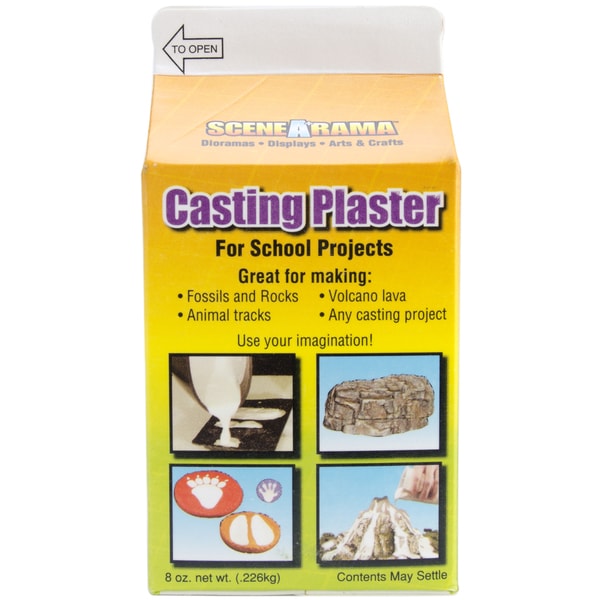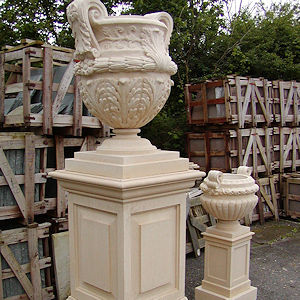
This will give you something to hold onto. Leave the top part (where there is no cast material) dry. Now gently rub a very small amount of washing up liquid on a wet hand around the main part of the mould. Remove your cast from its cardboard and head for the kitchen sink. But for best results leave 12 hours for it to fully harden :) Then approx another hour or 2 depending on the mould size before you can remove the mould. It will take approx ½ to ¾ of an hour for the mould to feel warm as the chemical reaction starts. This way it gives you cast to play with if the casts have not set square.Īll that is left to do now is wait for it to set. Fill your moulds to just above the level of the piece. When you place the supports back onto your cups it’s a good thing to make sure that the moulds sit square on their supports, otherwise you will end up with a lop sided cast that needs loads talking off and they can be very hard to get level again without causing too much damage to the piece. The bottom jaw on most knights are placed in such a way that air bubbles will form if you don’t manipulate it out. Pay special attention to high detail areas and things such as knight’s heads. Do this by using the same method as you did in the water, thumb and finger and gentle rub the mould together. From past experience I have found it best to pour out the mixture into all the moulds and then go back to manipulate out any other air bubbles. If you pour straight into the bottom you’re more likely to trap air bubbles in the mould detail. Pour the mixture into the mould using the side of the mould and allowing it to fill up. You’re now ready to pour the mixture into your moulds. This should take no longer than a few minutes until the mixture has a very smooth consistency and no more bubbles rise to the surface. Letting the mixture settle in between stirs to allow the bubbles you release to raise to the surface. You must only stir gently and for a short time. This way you should not put any more air into the mixture.

Gently stir from the outside working in, with your folk scrapping across the bottom of the jug. Leave to stand for a minute till all the powder has sunk below the water line. Nothing worse than a big clump in the middle and nothing elsewhere. Make sure the powder also goes round the edges.

You will know when there is enough powder in as it won’t sink any more, and just form a small island in the middle of your jug. Keep doing this, trying to make sure it goes in evenly and without too many big lumps falling in. Place an amount of powder onto your spoon and gently sprinkle it into the jug with your measured out water. Do this with all your moulds then leave them to drain for a minute or 2 then shake to remove any excess and place ready in cardboard supports on cups/glasses. Once you are sure they are totally wet measure approx ¾ of the mould volume and pour into your jug. This will help the water to reach all the dry parts of the mould. Manipulate the moulds in the water using thumb and forefinger. Make sure it’s deep enough so you can turn the moulds upside down to let out any air bubbles. So place all the moulds you want to use into a sink/bowl of warm water.
Stone casting plaster free#
The moulds make a better bubble free cast when they are wet. Just make sure that they are deep enough, so that the mould hangs freely and does not touch the sides or bottom, as this will distort the casting. A selection of cups/glasses or anything else you find suitable to rest your cardboard cut outs on. Other things that you will need are a plastic measuring jug, large plastic spoon, fork and a cloth to hand to wipe up any spills. It’s also best to mark them up with a marker, so it’s easy to recognise which cardboard support fits each piece. Best way to do this is turn up the rim of the mould so the bottom of what would be the chess piece is touching it. Second, always have your cardboard cut out supports made up before hand. This stops them from going sticky and prevents the rubber from deteriorating.

To gain the best from your moulds always clean them well after use and dust down with non-perfumed talc. There is no point trying to cast anything if your moulds are not clean. It’s taken me 10 years to learn these lessons, at the cost of many cast pieces ending up in the bin and my frustration level going through the roof.įirst off is mould preparation. So I hope the tips I am about to give you will help you with your project. When first using the stone powder you come across many problems with consistency, air bubbles, and bits breaking off when you try to remove the moulds. Casting with stone powder is not as easy as we are led to believe by the manufacturers of the product.


 0 kommentar(er)
0 kommentar(er)
